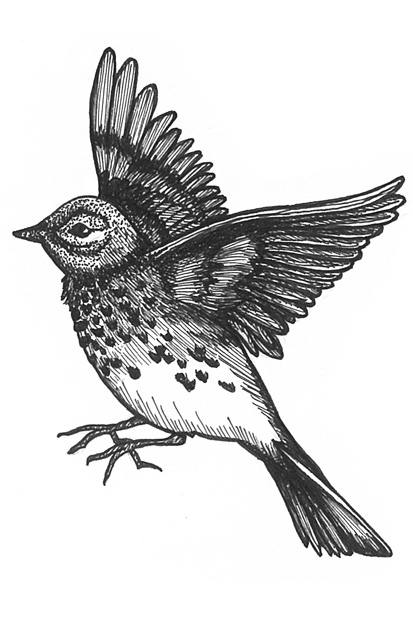This book is a portrait of one man’s meadow. Our now almost vanished meadowland, with its tapestry of wildflowers, abundant wildlife and rich human history, has long attracted English writers. Modern meadow books are usually copiously illustrated in colour to reach the coffee-table market, but John Lewis-Stempel bravely relies on lively elegant prose. His thoughtful, discursive, often humorous and always enjoyable narrative conveys a vital message, for one cannot overemphasise how important are these last ancient meadows.
They are a cultural heritage and vital store of biodiversity, not least the genetic variation of grasses, clovers and other forage plants. A store of leaves, seeds and invertebrate ‘mini-beasts’, they are a feeding ground for birds, amphibians, reptiles and mammals. They provide important ecological ‘goods and services’, locking up carbon and maintaining health and integrity of soil, water and the varied buglife that predates crop pests. And, in addition to fodder, wildflower-rich meadows yield honey as well as medicinal, dye, symbolic and other useful plants.
Meadowland, an extended essay in loose diary form, traces across a single year the changing face of John Lewis-Stempel’s own working hay-meadow. His holding, framed by what he calls the ‘forbidding wall dam’ of the Black Mountains, lies just into Herefordshire. The slightly acid soil, derived from Devonian rocks, is red and the shingle- and alder-fringed River Escley, haunt of otters and kingfishers, forms one boundary.
No urban dreamer but a practical farmer, the author loves his land and knows its value to him, the local community and the wider human population. Well-steeped in the English tradition of writing about nature and the land, he dissects the minutiae of his field, mixing intimate observation of the web of life in the meadow, its links to farming and the history of the site with practical detail, absorbing the reader into his farm experiences and broader ecological perspectives. He joins Adrian Bell, John Stewart Collis, A.G. Street and other literary farmers — inspiration forged by hard practical reality — and is a worthy successor to the man who is clearly his mentor, the late 19th-century countryside writer Richard Jefferies, while at the same time expressing a truly contemporary voice.
Lewis-Stempel knows and understands the meadow. It talks to him, and he talks to the reader as he carries out daily tasks in all weathers, observing the flowers, birds, mammals, insects (including the pestilential horseflies), spiders and not least the earthworms — all building-bricks of meadow biodiversity. Didactic but gently so, he is the man in the pub rather than teacher or tutor. In fact he is remarkably restrained for somebody so moved by the natural world, despite being what the American nature writer Hal Borland termed ‘a talkative fellow’.
Unlike Jefferies, dead of TB before 40, Lewis-Stempel has health and strength, and access to modern field guides (permitting him to inject a little science). The naturalist can be a lonely figure, and he seems alone in his private paradise, but is also devoted to his family, who feature from time to time. Nor is he over-sentimental, for he is a veteran forager and happily shoots (but not snipe). Like another of his heroes, John Clare, he lovingly evokes a landscape that is too much a relic of the past to have a secure future in a materialistic modern world.
A recent Wildlife Trusts report indicated that England’s nature-rich grasslands remain in catastrophic decline, under pressure from building, new roads, intensive agriculture or just neglect. Fertilisers and early silage cuts have all but eliminated these traditional swards since 1945, as has the neglect of so many conservationists who fail to appreciate the commonplace. Thus Lewis-Stempel’s meadow, ecologically lowland, if mountainy enough to have nesting curlews, is all the more precious.
A diverse flora includes well-loved wildflowers: bird’s-foot trefoil, cowslip, devil’s-bit scabious and the marsh fritillary caterpillars that feed on it, knapweed, meadow vetchling, sorrel (‘rusty-red towers’), tormentil and yellow rattle. An attractive meadow like this is hard to conserve, lacking botanical and other rarities that scientists like to tick off on official forms. Yet it is precisely these and other ancient assemblages of once-abundant plants and animals that are so remarkable. Read this book and you will see just why they are precious and why we must save what few remain.






Comments